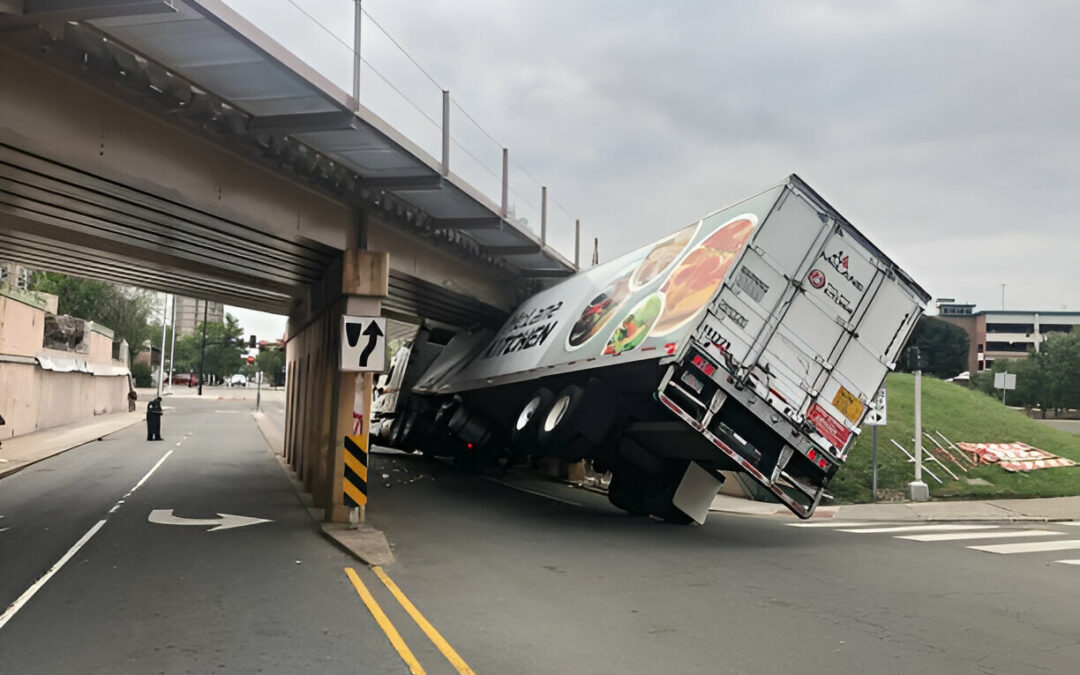A semi-truck is extraordinarily large both in size and weight, which makes them some of the most dangerous vehicles on the road. Sometimes weighing as much as 40 tons and standing as tall as 14 feet or more, a commercial semi-truck is a lumbering beast that takes immense skill and caution to operate safely, particularly at highway speeds. This means sudden or unexpected road hazards can be particularly dangerous to these vehicles, and when they are forced to turn or swerve quickly, potentially devastating truck accidents can occur.
As a regular motorist, you should take every precaution to try to navigate safely around semi-trucks to not only avoid an accident, but avoid being the cause of one and risk injury to yourself and others. Here are a few tips for avoiding being involved in an accident with a semi-truck.
Keep a Comfortable Distance
Because of the immense size and weight of a semi-truck, they need an abundance of additional space when executing any type of maneuver, whether it’s changing lanes, coming to a stop, or even getting up to speed to merge into a highway. You might be comfortable tailgating the car in front of you, particularly on a slow moving road or in gridlock traffic, but a semi-truck doesn’t have that same maneuverability. They take a much longer distance to come to a stop and even with their brakes fully engaged they can still skid for quite a long ways.
If you’re driving behind a semi-truck, staying too close puts you in the rear blind spot and you risk rear ending the truck if it stops abruptly. It also blocks your view of seeing the traffic ahead, which can be dangerous if you’re trying to pass. However, cutting off a semi-truck and entering the space they need to stop can put you at risk of being rear-ended by a much-heavier vehicle, which can also lead to serious injuries. Stay out of a truck’s blind spots and as far away from them as possible and you’ll have a much easier time reacting to one of anything goes wrong.
Pass Carefully
On a related note, if you do find yourself driving close to a semi-truck, such as on a two-lane road, it’s best to try to get past them as fast as possible. Try your best to pass on the left side (the driver side), as the right side of trucks has larger blind spots than on the left. After passing the truck, ensure that you are putting enough space between the back of your car and the front of the truck. Changing lanes to cut the semi-truck off puts you at risk of possibly being rear ended, so it’s not advised that you do this.
Stay Visible
Unlike your personal car, a semi-truck cannot see out its rear and into its blind spots by simply turning around. With a giant trailer payload behind them and no back row, drivers are forced to rely on large protruding side-view mirrors. While they do have blind spot mirrors that help drivers see what is below them right along their sides, these do not spot everything and aren’t always clear, meaning it’s not impossible for a driver who’s being careful to still not notice you. As a general rule, much like the other two, stay as far away from a semi-truck’s four primary blind spots you will have more time to react should they suddenly swerve.
Watch for Wide Turns
Because of their immense length, semi-trucks take a lot more space to turn than a traditional car does. Notably, these vehicles pivot where the trailer attaches to the tractor itself, which means they have the tendency to actually consume a much wider space when turning than you might think. This is particularly true for right turns, where the truck must fit into a much smaller radius, so it cuts further into the inside of its turn than on left turns.
No matter which direction a truck might be turning, never attempt to pass it on the inside. If a truck has its turn signal on and has left an inside lane open, never travel into it. You’ll be putting yourself at an immense risk for being crushed by the trailer if you do.
If you’ve recently been in an accident involving a semi-truck, call a trusted and experienced North Carolina truck accident Attorney at (919) 828-4357 for a free consultation.

